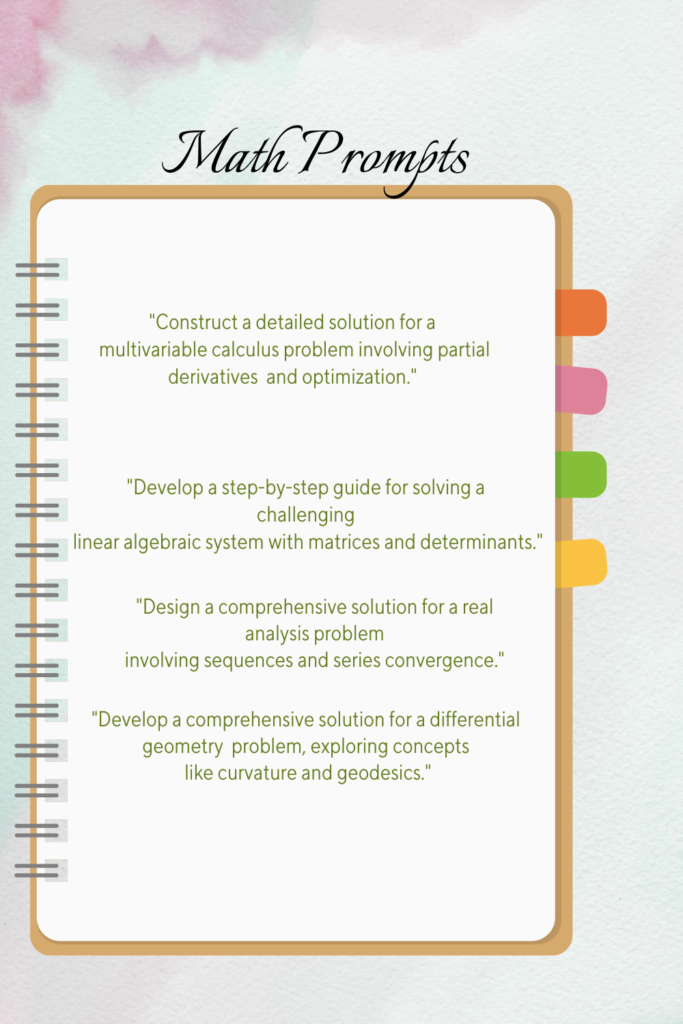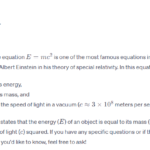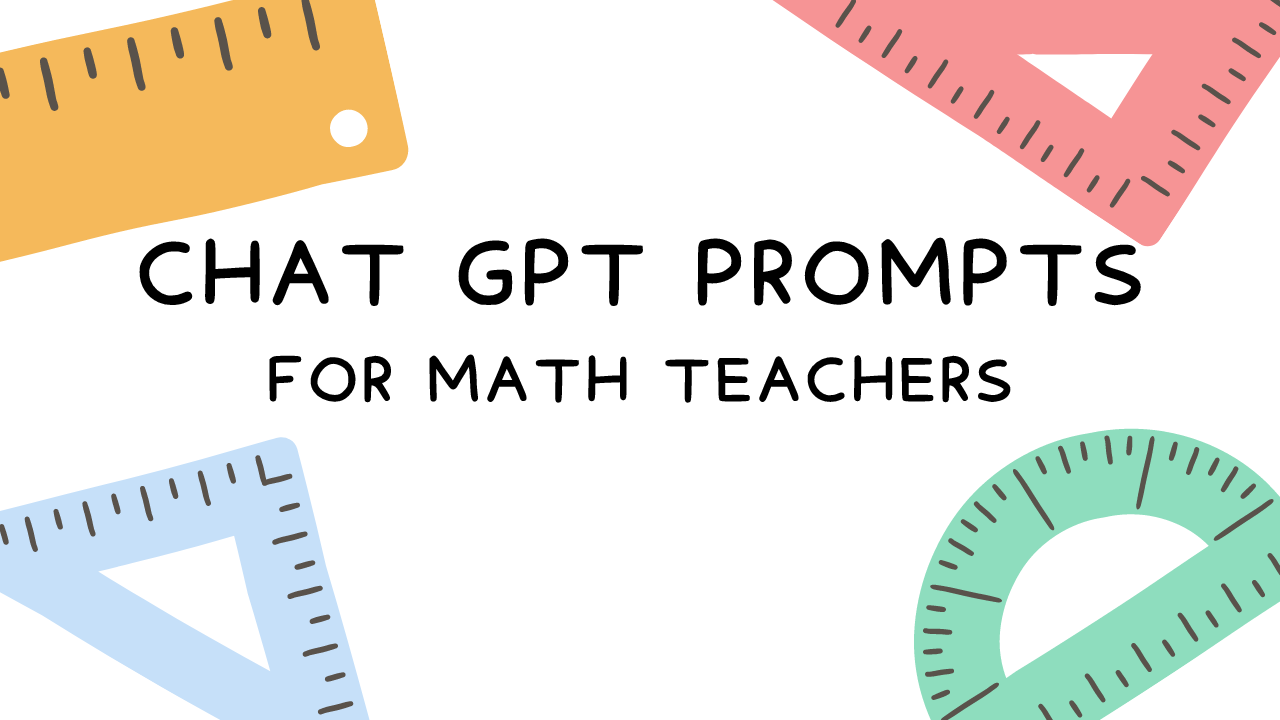Step into the world of innovative math teaching with our blog post, “CHATGPT PROMPTS FOR MATH TEACHERS.” It’s your guide to a specially curated collection of prompts crafted for ChatGPT, Bard, and Claude.
As of December 18 , 2023, the educational landscape is buzzing with the potential of AI-driven Large Language Model( Chat GPT, Google Bard) and this post aims to connect math educators with these AI powered tools to elevate their teaching experience. We’ll explore prompts designed to enrich lessons, spark students’ curiosity, and streamline the teaching process.
List of Best Prompts for Math Educators
These Math prompts serve as versatile building blocks, customizable for various grade levels, specific topics, and unique classroom goals.
As we navigate through these prompts, remember that they are not just starting points but adaptable tools that can be personalized to suit your teaching style and the needs of your students.
Learn more about use of Chat GPT in Education

Let’s unlock the potential of these prompts to make math education an exciting journey for both teachers and learners.
Top 25 ChatGPT Prompts Tailored for High School Math Teachers
Math prompts used high school math teachers
| SR# | Generic | Example |
|---|---|---|
| 1 | Design a lesson plan for teaching [mathematical concept] to [grade level], emphasizing [specific focus]. | Design a lesson plan for teaching quadratic equations to tenth graders, emphasizing real-world applications. |
| 2 | Create a set of [number] challenging word problems involving [mathematical topic], suitable for [grade level]. | Create a set of 10 challenging word problems involving trigonometry, suitable for eleventh-grade students. |
| 3 | Develop an interactive activity to illustrate the properties of [geometric shape] for [grade level] students. | Develop an interactive activity to illustrate the properties of parallelograms for ninth-grade students. |
| 4 | Generate a step-by-step guide for teaching [calculus concept] to [grade level] students, highlighting key applications. | Generate a step-by-step guide for teaching limits to twelfth-grade students, highlighting applications in physics. |
| 5 | Craft a project-based assignment for exploring [probability or statistics concept] with [grade level] students. | Craft a project-based assignment for exploring probability distributions with eleventh-grade students. |
| 6 | Formulate discussion prompts for a classroom debate on the practical uses of [algebraic concept] for [grade level]. | Formulate discussion prompts for a classroom debate on the practical uses of systems of equations for tenth-grade students. |
| 7 | Create a collaborative group activity for [geometry concept], suitable for [grade level] learners. | Create a collaborative group activity for exploring the properties of circles, suitable for ninth-grade learners. |
| 8 | Design an engaging presentation to introduce [trigonometric concept] to [grade level] students, incorporating visuals. | Design an engaging presentation to introduce the unit circle to twelfth-grade students, incorporating visuals. |
| 9 | Devise [number] review questions for a unit test on [number theory concept] for [grade level] students. | Devise 15 review questions for a unit test on modular arithmetic for eleventh-grade students. |
| 10 | Integrate a [technology tool or platform] into a lesson on [calculus concept] for [grade level] students. | Integrate Desmos into a lesson on derivatives for twelfth-grade students. |
| 11 | Create a real-world scenario where [mathematical concept] is applied, and develop accompanying problems for [grade level]. | Create a real-world scenario where linear programming is applied to optimize resource allocation, and develop accompanying problems for twelfth-grade students. |
| 12 | Plan a sequence of [number] hands-on activities for [geometry concept], ensuring [grade level] engagement. | Plan a sequence of 5 hands-on activities for exploring the volume of 3D shapes, ensuring ninth-grade engagement. |
| 13 | Construct a set of [number] inquiry-based questions for a lesson on [algebraic concept] for [grade level] students. | Construct a set of 8 inquiry-based questions for a lesson on factoring polynomials for tenth-grade students. |
| 14 | Explore the historical development of [mathematical concept] and prepare a brief lesson for [grade level] students. | Explore the historical development of calculus and prepare a brief lesson for eleventh-grade students. |
| 15 | Connect [mathematical concept] with [another subject], making it engaging for [grade level] students working on [specific skill]. | Connect trigonometry with physics, making it engaging for twelfth-grade students working on understanding projectile motion. |
| 16 | Write a scene where characters discuss and solve a mathematical problem related to [mathematical concept], suitable for [grade level]. | Write a scene where characters discuss and solve a mathematical problem related to logarithmic functions, suitable for eleventh-grade students. |
| 17 | Recommend [number] fun activities to reinforce understanding of [geometry or algebra concept] for [grade level] students. | Recommend 3 fun activities to reinforce understanding of the Pythagorean theorem for ninth-grade students. |
| 18 | Compose an email to parents providing an overview of what their children will learn in math class this month, focusing on [skills/goals]. | Compose an email to parents providing an overview of what their children will learn in math class this month, focusing on mastering quadratic functions. |
| 19 | Suggest a recipe for [number] people using the following [mathematically related ingredients], explaining the math involved. | Suggest a recipe for 4 people using the following ingredients related to ratios, explaining the math involved. |
| 20 | Using [math concept], plan a song to the tune of [name of song] for [grade level], making it memorable and educational. | Using the concept of probability, plan a song to the tune of ‘Twinkle, Twinkle, Little Star’ for tenth-grade students, making it memorable and educational. |
| 21 | Explore [number] different ways to visually represent [math concept] for [grade level] students, ensuring clarity and understanding. | Explore 5 different ways to visually represent the concept of functions for eleventh-grade students, ensuring clarity and understanding. |
| 22 | Write an email to colleagues sharing your favorite ChatGPT prompt and how it enhanced a lesson for [grade level] students. | Write an email to colleagues sharing your favorite ChatGPT prompt and how it enhanced a lesson on probability for tenth-grade students. |
| 23 | Plan a math-themed sequence of [number] discussion prompts for [grade level] students to explore and debate [math concept/problem]. | Plan a math-themed sequence of 10 discussion prompts for ninth-grade students to explore and debate the concept of prime numbers. |
| 24 | Introduce [mathematical concept] in a humorous way through a short skit for [grade level], ensuring both entertainment and learning. | Introduce the concept of linear equations in a humorous way through a short skit for tenth-grade students, ensuring both entertainment and learning. |
| 25 | Suggest a hands-on activity for [grade level] students to understand the concept of [math topic], incorporating everyday materials. | Suggest a hands-on activity for eighth-grade students to understand the concept of area and perimeter, incorporating everyday materials like rulers and graph paper. |
Feel free to use or modify these prompts as needed for your high school math teaching needs!
13 Engaging Prompts for Primary School Math Teachers
| # | Generic Syntax | Example |
|---|---|---|
| 1 | Design a lesson plan for introducing basic addition and subtraction to [grade level] students, incorporating hands-on activities. | Design a lesson plan for introducing basic addition and subtraction to first-grade students, incorporating hands-on activities with counting objects. |
| 2 | Create a set of [number] fun and interactive math games for reinforcing counting skills among [grade level] students. | Create a set of 5 fun and interactive math games for reinforcing counting skills among kindergarten students. |
| 3 | Develop a creative story or rhyme that introduces the concept of shapes to [grade level] students in an engaging way. | Develop a creative story or rhyme that introduces the concept of shapes to second-grade students in an engaging way. |
| 4 | Generate a series of visual aids to teach [number sense or basic arithmetic concept] to [grade level] students. | Generate a series of visual aids to teach skip counting to third-grade students. |
| 5 | Craft a hands-on activity to explore basic fractions with [grade level] students, using everyday materials. | Craft a hands-on activity to explore basic fractions with first-grade students, using paper and scissors. |
| 6 | Formulate [number] story problems involving basic multiplication, suitable for [grade level] students. | Formulate 8 story problems involving basic multiplication, suitable for fourth-grade students. |
| 7 | Design an interactive project for [grade level] students to create a visual representation of a number line. | Design an interactive project for second-grade students to create a visual representation of a number line. |
| 8 | Create a set of engaging flashcards to reinforce [basic math concept] for [grade level] students. | Create a set of engaging flashcards to reinforce basic addition facts for kindergarten students. |
| 9 | Devise a song or chant to help [grade level] students memorize key math facts or concepts. | Devise a song or chant to help third-grade students memorize multiplication tables. |
| 10 | Integrate technology by recommending a [math-related app or game] to enhance learning for [grade level] students. | Integrate technology by recommending a math-related app to enhance learning for kindergarten students. |
| 11 | Plan a sequence of [number] math-related storybooks for [grade level] students, emphasizing key concepts. | Plan a sequence of 3 math-related storybooks for first-grade students, emphasizing counting and addition. |
| 12 | Develop a series of [number] hands-on activities for teaching basic time concepts to [grade level] students. | Develop a series of 5 hands-on activities for teaching basic time concepts to second-grade students. |
| 13 | Craft a project-based assignment for [grade level] students to create their own math board game. | Craft a project-based assignment for third-grade students to |
40 Advanced Math Prompts for College / University Professors
Here are 40 prompts tailored for college and university-level math teachers dealing with complex problems:
- “Construct a detailed solution for a multivariable calculus problem involving partial derivatives and optimization.”
- “Develop a step-by-step guide for solving a challenging linear algebraic system with matrices and determinants.”
- “Create an in-depth explanation of solving a complex differential equation using advanced methods such as Laplace transforms.”
- “Design a comprehensive solution for a real analysis problem involving sequences and series convergence.”
- “Formulate a detailed proof for a challenging abstract algebra concept, such as group homomorphisms or isomorphisms.”
- “Solve a complex problem in numerical analysis, focusing on iterative methods for approximating roots of nonlinear equations.”
- “Illustrate the process of solving an advanced probability theory problem, incorporating concepts like conditional probability and stochastic processes.”
- “Provide a detailed solution for a challenging problem in mathematical logic, covering topics like propositional and first-order logic.”
- “Develop a comprehensive solution for a differential geometry problem, exploring concepts like curvature and geodesics.”
- “Create an advanced solution for a problem in functional analysis, emphasizing topics such as Banach spaces and operators.”
- “Formulate a step-by-step guide for solving a difficult nonlinear optimization problem using calculus of variations.”
- “Solve a complex problem in algebraic topology, exploring concepts like homology and cohomology.”
- “Develop an in-depth solution for a problem in mathematical statistics, incorporating concepts like hypothesis testing and confidence intervals.”
- “Design a detailed solution for a problem in discrete mathematics, covering topics like graph theory and combinatorics.”
- “Create a comprehensive solution for a challenging problem in algebraic number theory, exploring concepts like unique factorization domains.”
- “Solve an advanced problem in mathematical modeling, utilizing techniques such as partial differential equations and boundary value problems.”
- “Illustrate the solution process for a complex problem in mathematical finance, incorporating concepts like stochastic calculus and option pricing.”
- “Provide a detailed solution for a problem in abstract algebra, focusing on advanced concepts like Galois theory.”
- “Develop a comprehensive solution for a problem in complex analysis, exploring concepts like contour integration and singularities.”
- “Formulate a step-by-step guide for solving a challenging problem in mathematical logic, covering topics like Gödel’s incompleteness theorems.”
- “Solve an advanced problem in numerical linear algebra, focusing on techniques like LU decomposition and iterative methods.”
- “Create a detailed solution for a problem in algebraic geometry, exploring concepts like schemes and sheaves.”
- “Design an in-depth solution for a problem in stochastic processes, incorporating concepts like Markov chains and Brownian motion.”
- “Provide a comprehensive solution for a challenging problem in functional analysis, emphasizing topics like topological vector spaces.”
- “Illustrate the solution process for a complex problem in mathematical physics, incorporating techniques from advanced calculus and differential equations.”
- “Develop a step-by-step guide for solving a difficult problem in mathematical optimization, covering topics like convex programming and duality.”
- “Solve an advanced problem in homological algebra, exploring concepts like derived functors and spectral sequences.”
- “Formulate a detailed solution for a problem in mathematical statistics, incorporating advanced topics like Bayesian inference and asymptotic theory.”
- “Create a comprehensive solution for a challenging problem in algebraic topology, covering topics like homotopy theory.”
- “Design an in-depth solution for a problem in mathematical logic, focusing on advanced topics like model theory and recursion theory.”
- “Solve an advanced problem in numerical analysis, incorporating techniques such as finite element methods and numerical integration.”
- “Illustrate the solution process for a complex problem in representation theory, exploring concepts like group representations and character theory.”
- “Provide a detailed solution for a problem in mathematical finance, incorporating advanced concepts like stochastic calculus and risk-neutral pricing.”
- “Develop a step-by-step guide for solving a difficult problem in algebraic number theory, covering topics like class field theory.”
- “Solve an advanced problem in mathematical modeling, focusing on techniques such as optimization and sensitivity analysis.”
- “Formulate a comprehensive solution for a challenging problem in discrete mathematics, incorporating advanced topics like Ramsey theory.”
- “Create an in-depth solution for a problem in mathematical physics, exploring concepts like quantum mechanics and special relativity.”
- “Design a detailed solution for a problem in algebraic geometry, incorporating advanced topics like Hodge theory.”
- “Provide a step-by-step guide for solving a complex problem in mathematical optimization, covering topics like convex analysis and nonlinear programming.”
- “Illustrate the solution process for a challenging problem in stochastic processes, incorporating concepts like Martingale theory and Ito calculus.”
These prompts cover a wide range of advanced mathematical topics typically encountered at the college and university levels.
Pros of USing AI as a Math Teahcers:
Artificial Intelligence (AI) can be a valuable tool for math teachers, providing support in various ways to enhance the teaching and learning experience. Here are several ways AI can be applied in a math education context:
- Personalize Learning: Tailor lessons to individual student needs.
- Automate Grading: Save time with automated grading for routine assignments.
- Provide Intelligent Tutoring: Offer additional support with virtual tutors.
- Analyze Data: Use learning analytics for data-driven decision-making.
- Create Interactive Content: Develop engaging materials and simulations.
- Implement Chatbots: Provide instant support for common questions.
- Explore VR and AR: Enhance learning through immersive experiences.
- Identify Learning Gaps: Intervene early by assessing student understanding.
- Facilitate Collaboration: Use AI tools for collaborative learning.
- Support Professional Development: Assist teachers with personalized training modules.
Best AI tools for math teachers
Explore alternatives to a math chat using GPT with options like Wolfram Alpha for computations, Symbolab for step-by-step solutions, Desmos for graphing, Microsoft Math Solver for various math problems, Photomath for photo-based problem-solving, GeoGebra for dynamic mathematics, and Khan Academy for instructional videos and exercises. Choose the one that best fits your needs.
How to write math equations in chat gpt

In a text-based environment like this chat, you can represent math equations using LaTeX syntax, which is a typesetting system commonly used for mathematical and scientific documents. Here are some examples:
Inline Math:
Surround the equation with single dollar signs for inline math. For example: $y = mx + b$.
Display Math:
Surround the equation with double dollar signs for display math. For example: $$E=mc^2$$.
Superscripts and Subscripts:
Use the caret (^) for superscripts and underscore (_) for subscripts. For example: $x^2$, $a_1$.
Fractions:
Use \frac to create fractions. For example: $\frac{a}{b}$.
Square Roots:
Use \sqrt for square roots. For example: $\sqrt{x}$.
Greek Letters:
Use \alpha, \beta, \gamma, etc., for Greek letters. For example: $\alpha + \beta$.
Summation and Integration:
Use \sum for summation and \int for integration. For example: $\sum_{i=1}^{n} i^2$, $\int_{0}^{1} x^2 \,dx$.
Here’s a simple LaTeX example that you can copy and modify:The quadratic formula is given by: $$x = \frac{-b \pm \sqrt{b^2 - 4ac}}{2a}$$
Feel free to use LaTeX syntax in your messages, and I’ll do my best to interpret and respond accordingly.
Is these Prompts Work With Google Bard
Yes,Google Bard’s vast knowledge and language processing skills are perfectly suited to handle all sorts of creative and educational prompts.
- 35 ChatGPT Prompts for Effective Resume Writing - 27 December 2023
- ChatGPT’s Power for Creative Writing: A Spark for Your Inner Muse - 23 December 2023
- The Role of Chat GPT in Enhancing Programming and Development Workflows - 21 December 2023
